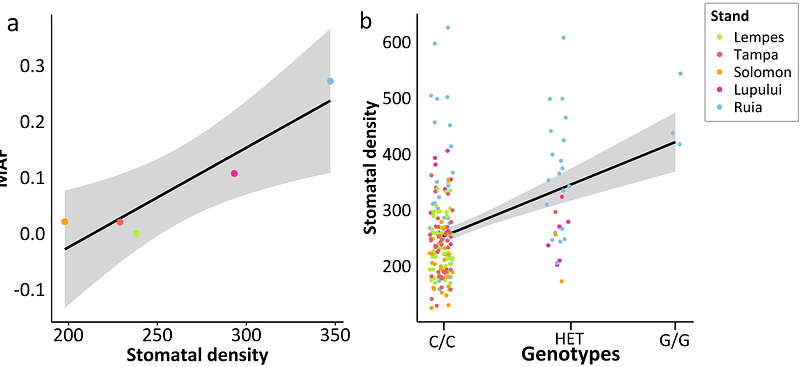Genome-wide association study in European beech (Fagus sylvatica L.) for drought stress traits

Genome-wide association study in European beech (Fagus sylvatica L.) for drought stress traits
Tost, M.; Grigoriadou-Zormpa, O.; Wilhelmi, S.; Mueller, M.; Wildhagen, H.; Curtu, A. L.; Beissinger, T.; Gailing, O.
AbstractForest tree breeding is an extremely long and tedious process. To study the genetic architecture of polygenic traits in long-lived species such as forest trees, costly field experiments are implemented. Phenotypic data on traits, that are measured at maturity, are only available after a long time and juvenile-mature correlations are often unknown. Genome-wide association studies (GWAS) aim to identify loci associated with drought stress, tree physiology, growth or wood quality traits, which could be prioritized in breeding programs. Genotypic and phenotypic data were collected from approximately 100 adult beech trees per stand in five locations in the South-Eastern Romanian Carpathians along an altitudinal gradient associated with precipitation and temperature. We performed GWAS using PLINK to identify SNP markers associated with traits related to drought stress. A total of 121 markers on eight chromosomes were identified as being associated with stomatal density. Sixty-four markers are located on chromosome 10 in a region spreading from ~4.89 to 13.67 Mb. There are five genes in this region that are thought to play a role in controlling stomatal density. All markers within this region exhibit similar allele frequencies, which are correlated with stomatal density and the altitudinal gradient of the stands. We assume this entire region is jointly involved in local adaptation to drought stress. We identified one interesting candidate SNP associated with leaf nitrogen content. Two SNP markers were identified as being significantly associated with {delta}13C as measure of intrinsic water use efficiency. Additionally, signals of significant polygenic selection for {delta}13C were observed.